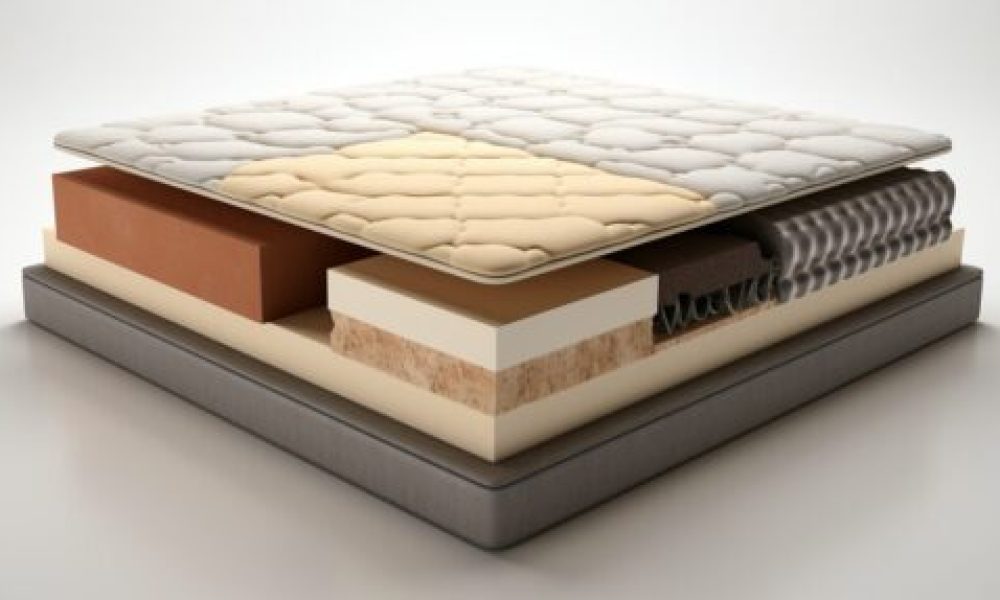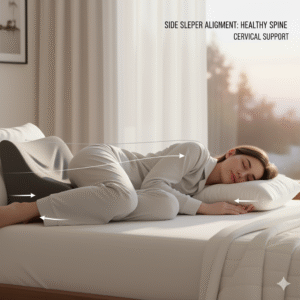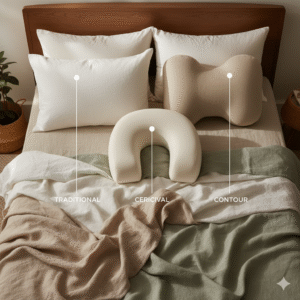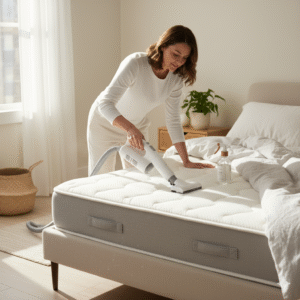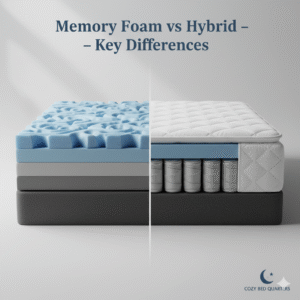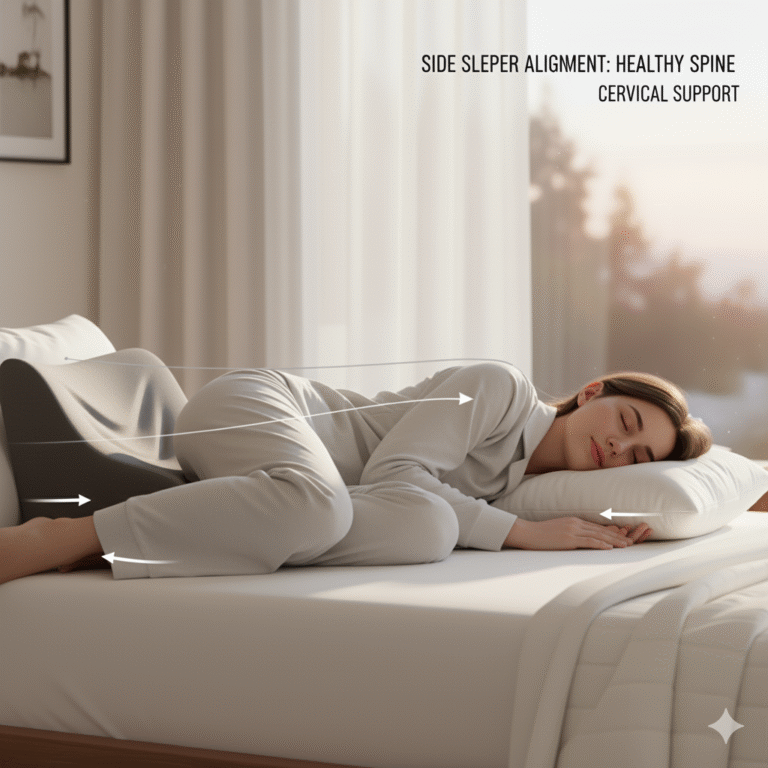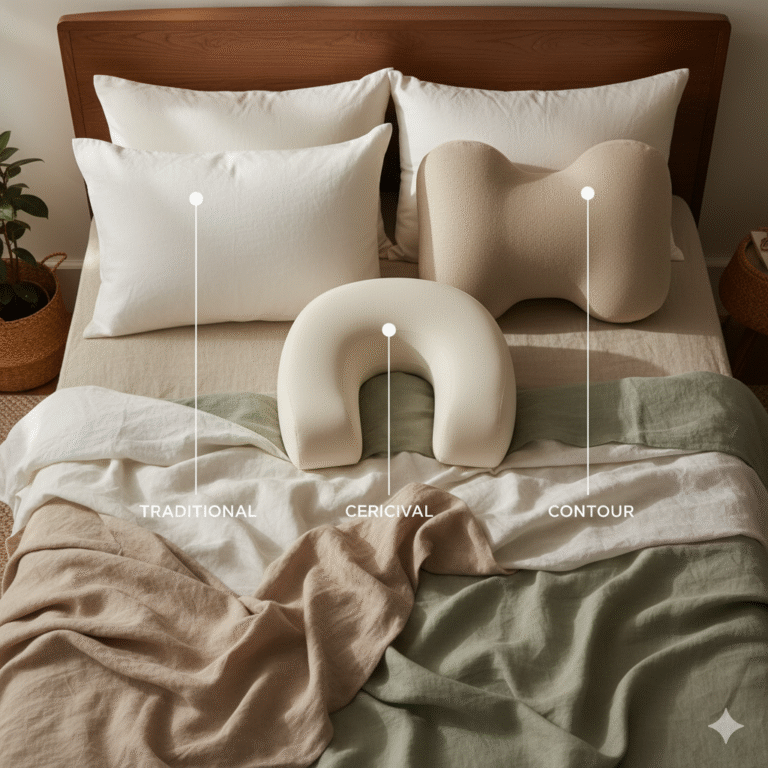Memory Foam vs Latex vs Innerspring — Pros, Cons & 2025 Best Picks
Answer first: If you’re deciding between memory foam vs latex vs innerspring, choose memory foam for plush pressure relief and motion isolation, latex for cooler bounce and durability, and innerspring for classic firm support and strong edges. Match feel to sleep position and budget, or try a hybrid to blend strengths.
Key Takeaways on Memory Foam vs Latex vs Innerspring
- Side sleepers: Memory foam cushions shoulders and hips; great motion isolation for couples.
- Cooler + durable: Latex runs cooler, feels buoyant, and often lasts 10–15 years.
- Classic feel & value: Innerspring delivers firmer support, lively bounce, and dependable edges.
- Hybrid = balance: Coils plus foam or latex combine contouring with support for mixed-position sleepers.
- Budget & lifespan for memory foam vs latex vs innerspring: Innerspring (7–10 yrs, $500–$1,800), Memory foam (8–10 yrs, $800–$2,500), Latex (10–15 yrs, $1,300–$3,000).
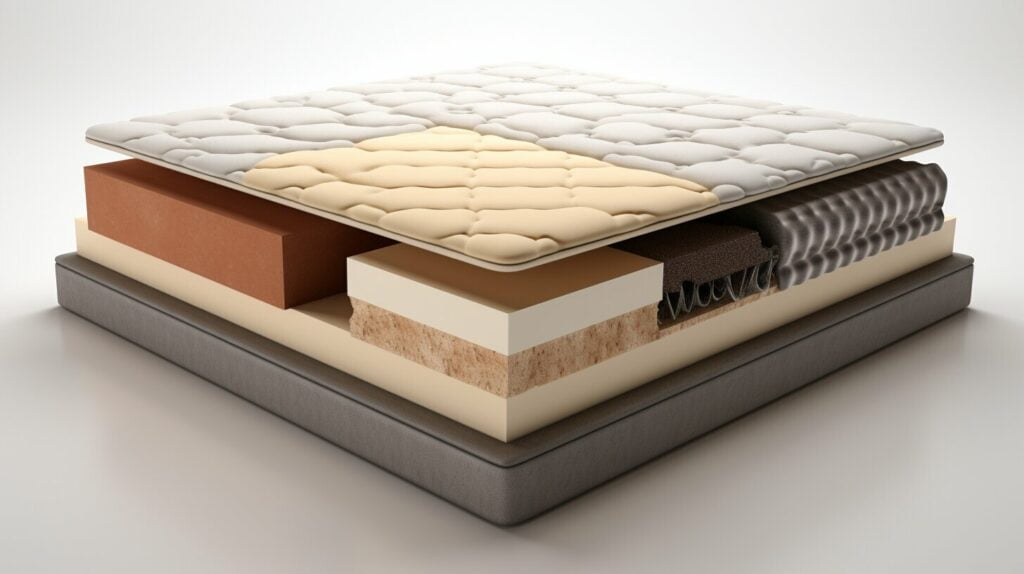
A quick overview of how foam, latex, and coil systems differ in feel, cooling, and support.
Why Your Mattress Choice Matters
The right surface keeps your spine aligned, eases pressure points, and helps you wake up refreshed instead of stiff. Your pick in the memory foam vs latex vs innerspring decision can also influence temperature, motion transfer, and long-term durability.
For foundational sleep-health guidance, see the National Sleep Foundation’s product education and the American Academy of Sleep Medicine resources.
Memory Foam: Cozy Contour
Choose memory foam if you want deep pressure relief, top-tier motion isolation, and a body-hugging feel—especially helpful for side sleepers and couples.
Imagine settling on your side and feeling the surface cradle your shoulder and hip. In the everyday memory foam vs latex vs innerspring debate, memory foam wins for contouring and quiet nights, though some foams can trap heat. Look for breathable covers, gel infusions, or ventilated designs to stay cooler.
Explore core builds in our types of mattresses guide for more on foam densities and layering.
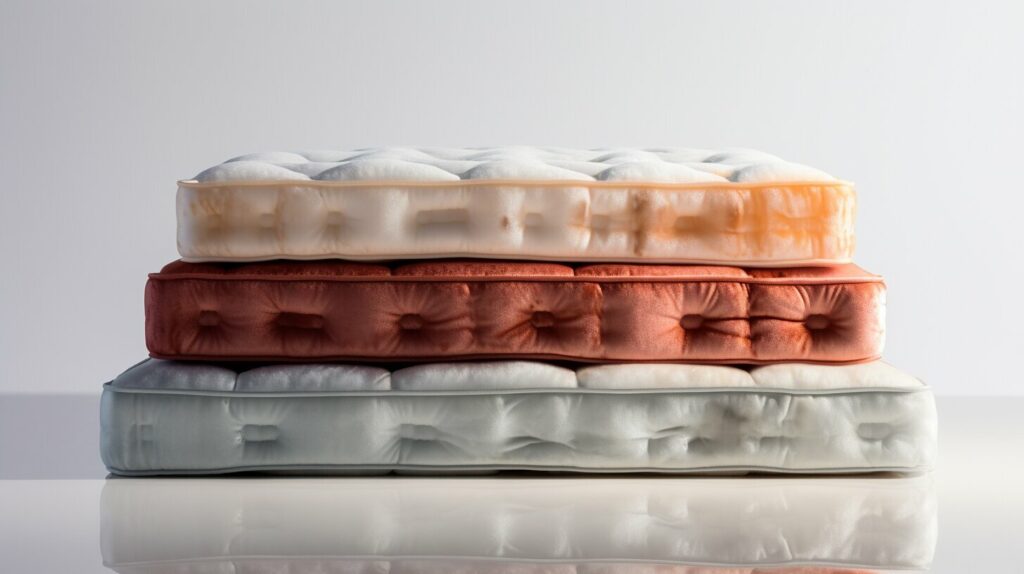
Cross-section visuals help you compare contouring foam, buoyant latex, and coil-based support.
Latex: Cool & Durable
Pick latex for a cooler sleep surface, buoyant support that’s easy to move on, natural allergy resistance, and standout durability.
Within the ongoing memory foam vs latex vs innerspring comparison, latex often appeals to hot sleepers and combo sleepers who change positions. Natural latex’s springy response keeps you from feeling “stuck.” Curious about eco and safety labels you may see? Scan this mattress certifications explainer to understand GREENGUARD Gold and CertiPUR-US.
Innerspring: Classic Support
Choose innerspring for a traditional, firmer feel with lively bounce and excellent edge support—often the most budget-friendly option.
Among memory foam vs latex vs innerspring choices, innerspring shines for back and stomach sleepers who like a lifted, on-top feel. The trade-off is less contouring than foam or latex, so strict side sleepers may prefer a plusher top or pillow-top design.
For deeper material contrasts, see best bed materials for comfort and longevity considerations.
Match Your Sleep Style
Align firmness to position: firmer for back or stomach to keep hips up; plusher for side sleepers to cushion shoulders and hips. The best fit in memory foam vs latex vs innerspring depends on how you sleep and your body weight.
- Back sleepers: Medium-firm keeps the lumbar area supported. Many hybrids strike a balanced feel.
- Stomach sleepers: Firmer builds prevent mid-section sink—often a firmer innerspring or firm hybrid.
- Side sleepers: Softer foam or latex layers relieve pressure. See quick tips for alignment in our pillow guide for back pain.
Hybrid: The Best of Both
Hybrids blend coil support with foam or latex comfort for a versatile, cooler feel than most all-foam beds. If you’re torn on memory foam vs latex vs innerspring, a well-built hybrid can deliver bounce, pressure relief, and strong edges in one package.
Many couples choose medium-firm hybrids to balance motion control with easy movement. Learn how coil gauges and comfort layers affect feel in our hybrid benefits guide.
Price & Lifespan: Quick Guide
Here’s how memory foam vs latex vs innerspring typically compare:
- Memory foam: About $800–$2,500, average life 8–10 years.
- Latex: About $1,300–$3,000, average life 10–15 years.
- Innerspring: About $500–$1,800, average life 7–10 years.
Prices vary with material quality, coil count, and certifications. When eco labels matter, check brand pages for GREENGUARD Gold or CertiPUR-US listings (see the certifications overview linked above).

Durability tends to trend highest for latex, followed by quality memory foam, then innerspring.
FAQ
Which is best in memory foam vs latex vs innerspring for hot sleepers?
Latex usually sleeps cooler thanks to airflow and quick response. Prefer foam’s hug? Choose ventilated or gel-infused foams with breathable covers.
Which mattress type helps most with back pain?
Many people do well on medium-firm options that keep the spine aligned. Latex and supportive hybrids are solid picks; plush memory foam can ease sensitive pressure points.
How long does a mattress last?
General averages: innerspring ~7–10 years, memory foam ~8–10, latex ~10–15. Rotate regularly and use a proper foundation to extend life.
What if I share a bed with a restless partner?
Memory foam and many hybrids excel at motion isolation. If you love bounce, look for pocketed-coil hybrids with motion-reducing comfort layers.
Bottom Line
The memory foam vs latex vs innerspring choice comes down to feel, sleeping position, and budget. Test a few, trust your body’s feedback, and pick the build that helps you wake up rested and ready for the day. For more detail on materials and constructions, start with our types of mattresses guide.

